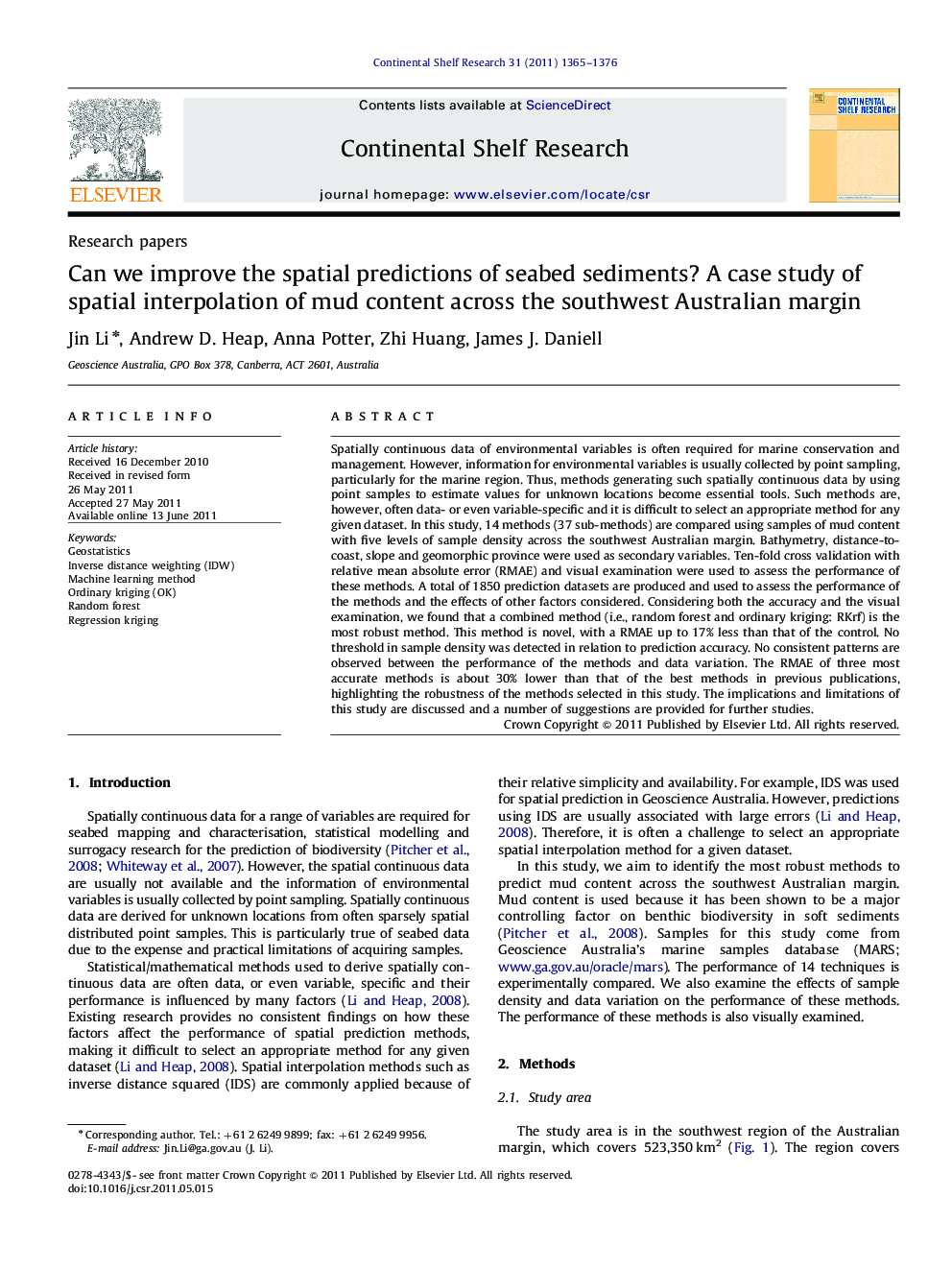| Article ID | Journal | Published Year | Pages | File Type |
|---|---|---|---|---|
| 4532610 | Continental Shelf Research | 2011 | 12 Pages |
Spatially continuous data of environmental variables is often required for marine conservation and management. However, information for environmental variables is usually collected by point sampling, particularly for the marine region. Thus, methods generating such spatially continuous data by using point samples to estimate values for unknown locations become essential tools. Such methods are, however, often data- or even variable-specific and it is difficult to select an appropriate method for any given dataset. In this study, 14 methods (37 sub-methods) are compared using samples of mud content with five levels of sample density across the southwest Australian margin. Bathymetry, distance-to-coast, slope and geomorphic province were used as secondary variables. Ten-fold cross validation with relative mean absolute error (RMAE) and visual examination were used to assess the performance of these methods. A total of 1850 prediction datasets are produced and used to assess the performance of the methods and the effects of other factors considered. Considering both the accuracy and the visual examination, we found that a combined method (i.e., random forest and ordinary kriging: RKrf) is the most robust method. This method is novel, with a RMAE up to 17% less than that of the control. No threshold in sample density was detected in relation to prediction accuracy. No consistent patterns are observed between the performance of the methods and data variation. The RMAE of three most accurate methods is about 30% lower than that of the best methods in previous publications, highlighting the robustness of the methods selected in this study. The implications and limitations of this study are discussed and a number of suggestions are provided for further studies.
►A novel combined method of random forest and ordinary kriging (RKrf) was developed. ► RKrf was the most accurate with a predictive error up to 17% less than that of the control. ► Predictive error of RKrf was 30% less than that of the best methods in previous publications. ► No threshold in sample density was detected in relation to prediction accuracy. ► No consistent patterns were observed between the performance of the methods and data variation.
